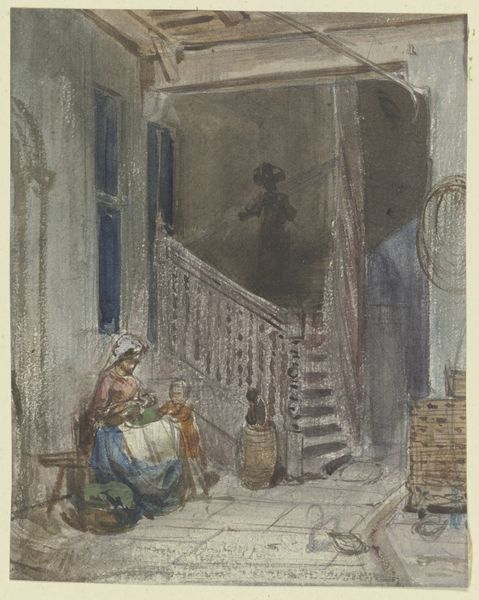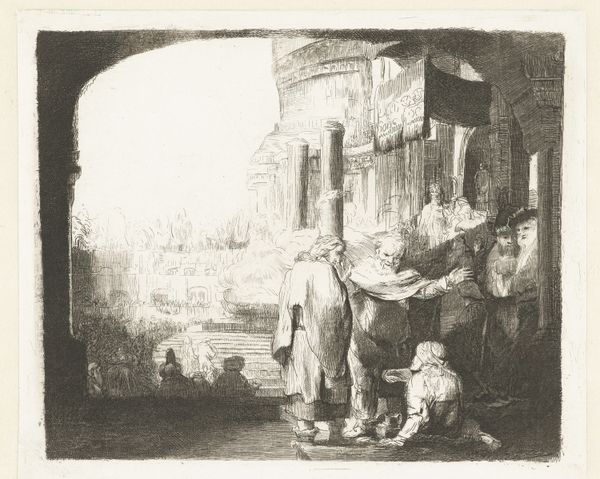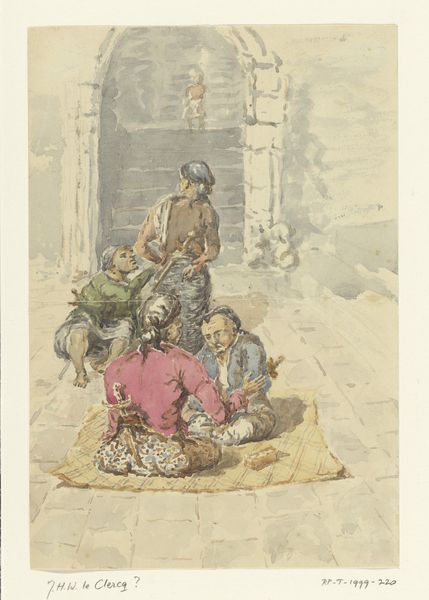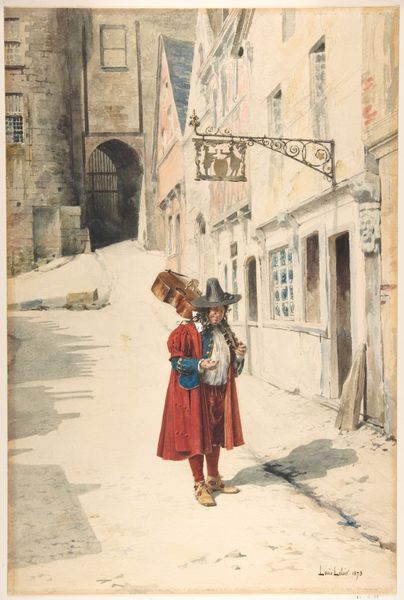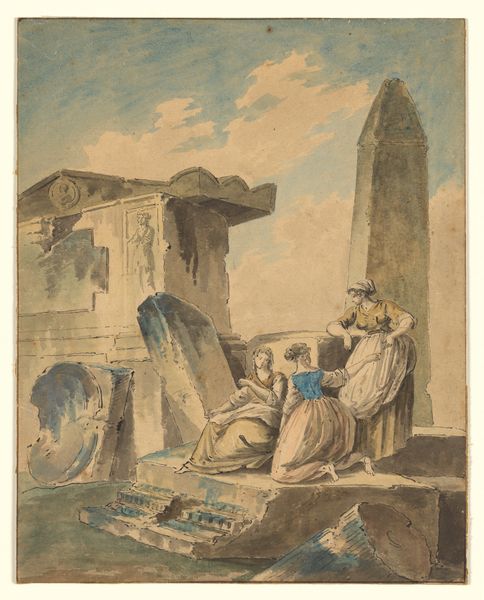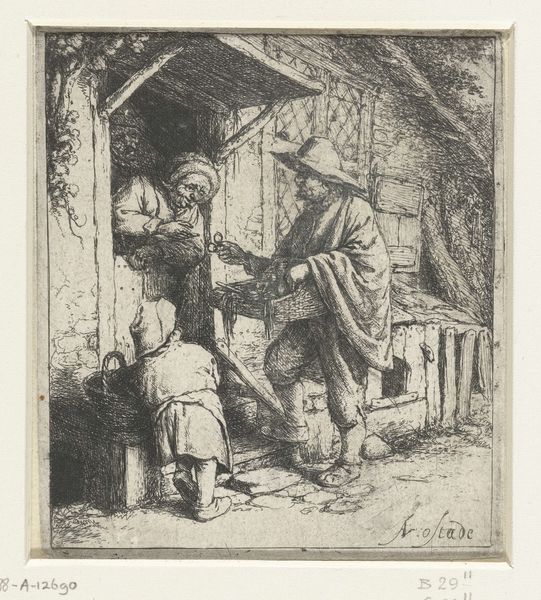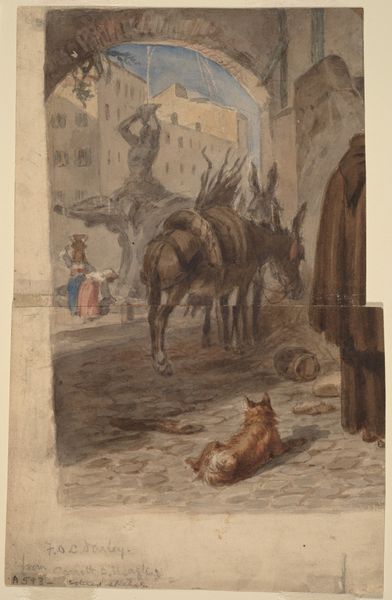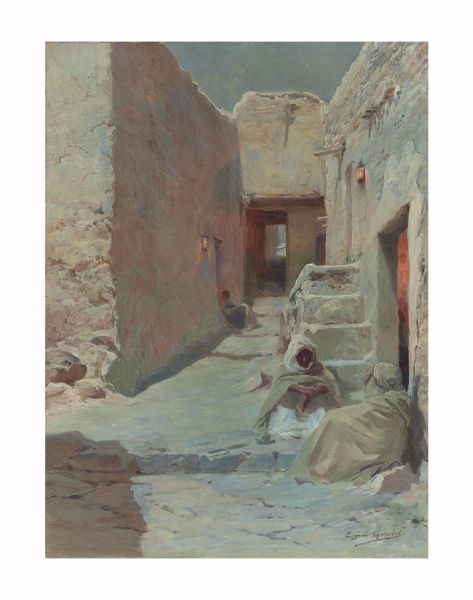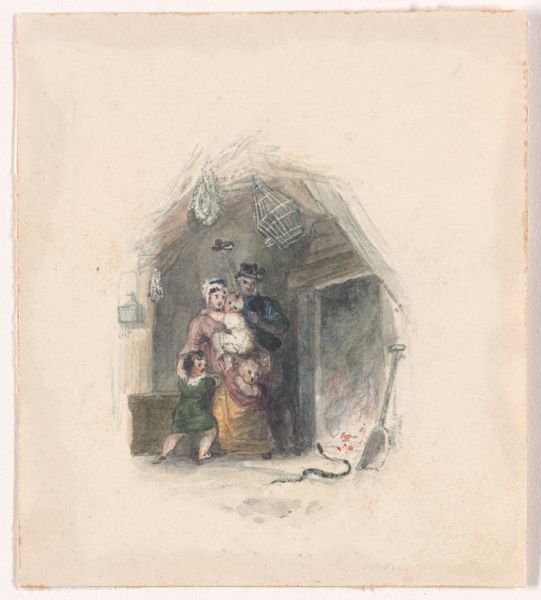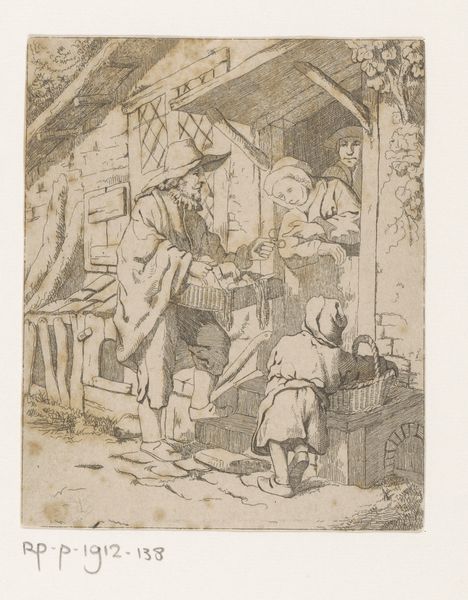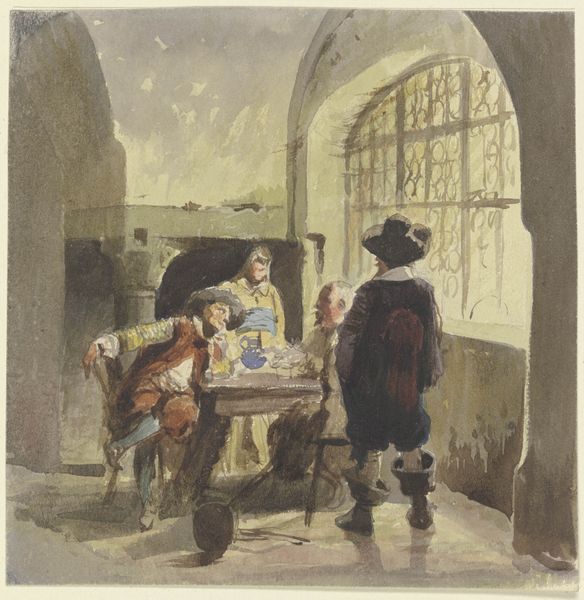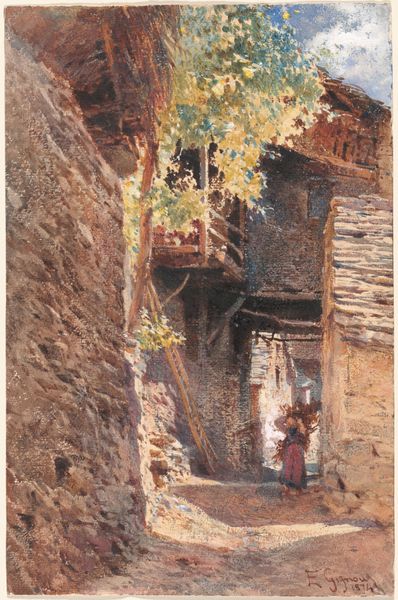
Dimensions: height 531 mm, width 320 mm
Copyright: Rijks Museum: Open Domain
Curator: This work, created between 1870 and 1885, is "View of a Small Street in Rocca di Papa" by Willem Johann Martens. Editor: My first thought? It evokes a certain languid stillness. The light carves strong shapes, and though there's human activity, it feels very much like the environment dictates the scene. Curator: Martens, although Dutch, lived in Rome for many years. This piece exemplifies a late 19th-century trend where artists focused on realistic portrayals of everyday life in Italy, intended for consumption by tourists and wealthy collectors. Editor: The image is deceptively simple. Watercolors are difficult, requiring precise layering. He's using light and shadow, especially in the stonework, to suggest antiquity and enduring rustic values. Curator: Indeed, these genre scenes satisfied a demand for idealized, romanticized visions of Italian life. Consider the symbolism of the figures, perhaps emblematic of simple virtues appreciated at the time. It's the Italy that Northerners dreamed about. Editor: Look closer at the pig rooting about, or the hen pecking. They are not mere details; these animals signify self-sufficiency, peasant life. Also, in classical painting, pigs sometimes stood for plenty but could just as often carry negative connotations depending on context. There is a complex message here. Curator: Absolutely, Martens captures a specific moment and its attendant social context but also subtly reinforces certain political messages—ideas about regionalism and ideal communities. This would play well in urban exhibitions throughout Europe. Editor: It’s a far cry from our current media portrayals of culture. Considering its place within art history helps us understand the past, while looking at the symbols encourages reflection about today's media landscape. Curator: Precisely. And so, this small street view expands to incorporate issues of cultural projection and national image building. Editor: And to imagine how much simpler that basket-bearer's life seemed when contrasted to contemporary industrial anxiety in, say, London. I can feel the romantic longing for such rustic simplicity that Northern audiences would have projected onto that distant, sundrenched scene.
Comments
rijksmuseum about 2 years ago
⋮
Martens was born in Amsterdam and settled in Rome around 1867. His subjects were young, fetching Italian women and genre scenes from Rome and Venice. With the kind of virtuoso execution then prevalent in Italy, he depicted a picturesque street in the town of Rocca di Papa, just south of Rome. At the time, Italian artists hardly ever singled out such subjects.
Join the conversation
Join millions of artists and users on Artera today and experience the ultimate creative platform.
